The Myers-Briggs® Personality Types of 325 Fictional Characters
Have you ever wondered which fictional characters have your Myers-Briggs® personality type? Today we’re going to explore the types of over three hundred fictional characters! This can give you an idea of how your personality type might show up in different situations or at different levels of maturity. Let’s get started!
Not sure what your personality type is? Take our new personality questionnaire here. Or you can take the official MBTI® here.
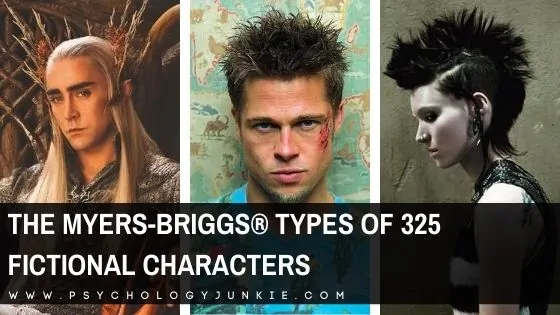
The Personality Types of 325 Fictional Characters
The ENFP “Visionary” – Imaginative/Inspiring/Innovative
From left to right: Ariel (The Little Mermaid), Barley Lightfoot (Onward), Anne Shirley (Anne of Green Gables), Wizard Howl (Howl’s Moving Castle), Josephine “Jo” March (Little Women), John Keating (Dead Poets Society)
Imaginative, energetic, and friendly, ENFPs are often the most endearing of fictional characters. These types see life as full of possibilities and adventures that they can’t wait to explore. They make connections between events and data very quickly, seeing random links where others do not. Their focus on the big picture can make them forward-thinking and creative, but it can also mean they trip up over details in the real world. Spontaneous and flexible, ENFPs prefer being innovative rather than relying on a pre-ordained plan. Freedom is crucial to these types, and they will fight being tied down by anyone. When it comes to decisions, they rely on their individual values to guide them.
Fictional ENFPs:
Bob Cratchit (A Christmas Carol), Anne Shirley (Anne of Green Gables), The Mad Hatter (Alice’s Adventures in Wonderland), Grandpa Joe (Charlie and the Chocolate Factory), Josephine “Jo” March (Little Women), Peter Pan, Pippi Longstocking, Wizard Howl (Howl’s Moving Castle), Ellie (Up), Clementine Kruczynski (Eternal Sunshine of the Spotless Mind), John Keating (Dead Poets Society), Barley Lightfoot (Onward), Patrick (The Perks of Being a Wallflower), Renly Baratheon (Game of Thrones), Ariel (The Little Mermaid), Elizabeth Bennett (Pride and Prejudice, the book, not the movie), Percival Blakeney (The Scarlet Pimpernel).
The ENTP “Trailblazer” – Revolutionary/Energetic/Analytical
From left to right: Tony Stark “Iron Man,” Willy Wonka (Charlie and the Chocolate Factory), The Tenth Doctor (Doctor Who), Captain Jack Sparrow (Pirates of the Caribbean), Fleabag (Fleabag), Augustus Waters (The Fault in Our Stars).
Mentally quick and often ingenious, the ENTP lives to dismantle tradition and explore new ways of seeing things. These types are rebellious but curious, open to many ideas, but anxious to find the truth. They enjoy solving challenging problems, analyzing a situation strategically, and developing novel solutions. Bored by routine, they will rarely do anything by the book. They tend to chase one interest after another, finding energy in a never-ending flow of ideas and alternatives.
Fictional ENTPs:
Tony Stark (Iron Man), Helena (A Midsummer Night’s Dream), Augustus Waters (The Fault in Our Stars), Fred and George Weasley (Harry Potter), Henry Tinley (Northanger Abbey), The Cheshire Cat (Alice’s Adventures in Wonderland), Willy Wonka (Charlie and the Chocolate Factory), Lord Henry “Harry” Wotton (The Picture of Dorian Grey), Mei Hatsume (My Hero Academia), Dustin Henderson (Stranger Things), Murray Bauman (Stranger Things), Klaus Hargreeves (The Umbrella Academy), The Tenth Doctor (Doctor Who), Jeff Winger (Community), Fleabag (Fleabag), Leo Valdez (Percy Jackson and the Olympians), Mercutio (Romeo and Juliet), Will Herondale (The Infernal Devices), Captain Jack Sparrow (Pirates of the Caribbean), Jack Skellington (The Nightmare Before Christmas), Ryuk (Death Note).
The INFP “Dreamer” – Idealistic/Imaginative/Individualistic
From left to right: Frodo Baggins (Lord of the Rings), Newt Scamander (Fantastic Beasts and Where to Find Them), The Little Prince, Jacob Portman (Miss Peregrine’s Home for Peculiar Children), Lucy Pevensie (The Chronicles of Narnia), Fern (Charlotte’s Web)
Creative and contemplative, INFPs look for meaning over material success. These types are driven by their imagination and their hope for a better, kinder world. More than anything, INFPs are loyal to their personal values. They gain their perspective of right and wrong from an independent standpoint, rather than looking to society’s rules and agendas. Naturally curious, they are adept at thinking outside-the-box and seeing many perspectives. Their lifestyle is flexible, adaptable, and tolerant unless a value is threatened.
Fictional INFPs:
Belle (Beauty and the Beast), Newt Scamander (Fantastic Beasts and Where to Find Them), Scout Finch (To Kill a Mockingbird), Louis de Pointe du Lac (Interview with the Vampire), Nico de Angelo (Percy Jackson and the Olympians), The Little Prince (The Little Prince), Quasimodo (The Hunchback of Notre D’ame), Mike Ross (Suits), Frodo Baggins (Lord of the Rings), Faramir (The Lord of the Rings), Romeo Montague (Romeo and Juliet), Coraline Jones (Coraline), Lucy Pevensie (The Chronicles of Narnia), Fern (Charlotte’s Web), Jacob Portman (Miss Peregrine’s Home for Peculiar Children), Marius Pontmercy (Les Miserables), Marianne Dashwood (Sense and Sensibility), Lady Dedlock (Bleak House), Tamaki Amajiki (My Hero Academia), Eric Alphonse (FullMetal Alchemist: Brotherhood), Nagato (Naruto), Joyce Byers (Stranger Things), Will Byers (Stranger Things), Vanya Hargreeves (The Umbrella Academy), Hester Prynne (The Scarlet Letter).
Read This Next: 24 Signs That You’re an INFP, the “Dreamer” Personality Type
The INTP “Prodigy” – Curious, Creative, Analytical
From left to right: Alice (Alice’s Adventures in Wonderland), Victor Frankenstein, L Lawliet (Death Note), Hiccup (How to Train Your Dragon), Nick Carraway (The Great Gatsby), Arthur Weasley (Harry Potter).
The INTP prodigy is driven to understand the logical components behind everything around them. They question and scrutinize ideas and systems, trying to decipher the underlying framework at play. More interested in ideas than social rules, they can seem tactless even if they do care what people think of them. INTPs enjoy exploring ideas and tend to have an open, curious outlook on life. They are eager for anything that will stretch the bounds of their mind and make them question and refine their thinking.
Fictional INTPs:
Margaret “Meg” Murry (A Wrinkle in Time), Arthur Weasley (Harry Potter), Smaug (The Hobbit), Pierre Bezukhov (War and Peace), Nick Carraway (The Great Gatsby), Alice (Alice’s Adventures in Wonderland), Hiccup (How to Train Your Dragon), Matilda (Matilda), Tsuyu Asui “Froppy” (My Hero Academia), Scott Clarke (Stranger Things), L Lawliet (Death Note), Bruce Banner “Hulk”, Neo (The Matrix), Elliot Alderson (Mr. Robot), Ranpo Edogawa (Bungou Stray Dogs), Winston Smith (1984), Victor Frankenstein, Ariadne (Inception), Betee Latier (The Hunger Games).
The ENFJ “Mentor” – Empathetic/Visionary/Organized
From left to right: Morpheus (The Matrix), Donna Paulsen (Suits), Anna Karenina, Queenie Goldstein (Fantastic Beasts and Where to Find Them), Professor Charles Xavier “Professor X” (X-Men), Margaery Tyrell (Game of Thrones)
Harmony-focused and insightful, ENFJs are driven to unite people towards a cause. They seem to have an innate sense of other people’s potential, and they enjoy inspiring people to grow. These types are more interested in what’s going on behind the scenes than what’s apparent on the surface, and because of this, they can often sense underlying motivations and needs. They have a gift for taking care of people’s emotional needs and counseling during tough situations.
Fictional ENFJs:
Margaery Tyrell (Game of Thrones), High Sparrow (Game of Thrones), Donna Paulsen (Suits), Luke Castellan (Percy Jackson and the Olympians), Anna Karenina, Phoebe Caulfield (The Catcher in the Rye), Mufasa (The Lion King), Morpheus (The Matrix), Diana Prince “Wonder Woman (Wonder Woman), Queenie Goldstein (Fantastic Beasts and Where to Find Them), Charles Xavier “Professor X” (X-Men), Carlisle Cullen (Twilight), Tanjiro (Kimetsu no Yaiba “Demon Slayer”)
The ENTJ “Architect” – Strategic/Organized/Decisive
From left to right: Lyanna Mormont (Game of Thrones), Number Five (The Umbrella Academy), Tywin Lannister (Game of Thrones), Lady Mary Crawley (Downton Abbey), Ross Poldark (Poldark), Edward Rochester (Jane Eyre)
ENTJs have a unique ability to set long-range goals and implement them in an organized manner. More focused on the future than the present, they enjoy trailblazing new paths, playing with ideas, and directing a team to achieve far-reaching objectives. These types are focused on the big picture and understanding the meaning of life. They believe every moment in life is meant to be used to its maximum potential.
Fictional ENTJs:
Ross Poldark (Poldark), President Snow (The Hunger Games), Tywin Lannister (Game of Thrones), Edward Rochester (Jane Eyre), All For One (My Hero Academia), Muzan Kibutsuji (Demon Slayer), Madara Uchiha (Naruto), Maximus Decimus Meridius (Gladiator), Octavian (Percy Jackson and the Olympians), Number Five (The Umbrella Academy), Francis J. Underwood (House of Cards), Donald “Don” Draper (Mad Men), Harvey Specter (Suits), Lyanna Mormont (Game of Thrones), The Handler (The Umbrella Academy), Lady Mary Crawley (Downton Abbey)
The INFJ “Mystic” – Insightful/Empathic/Determined
From left to right: Louise Banks (Arrival), Will Graham (Red Dragon), Kagaya Ubuyashiki (Kimetsu no Yaiba “Demon Slayer”), Sayuri (Memoirs of a Geisha), Gandalf the Grey (Lord of the Rings), Atticus Finch (To Kill a Mockingbird)
INFJs desire to grasp the profound and meaningful aspects of life and form authentic connections with individuals. These types have a skill at understanding complex meanings and grasping underlying themes and patterns. They trust their insights to guide them in the right direction and to help them decipher the background processes at work under the surface of events. With their big picture vision and empathy, they are often emotionally insightful, compassionate, and driven. Personal growth and improvement are a large focus of their lives and they are rarely content to be stagnant.
Fictional INFJs:
Gandalf the Grey (The Lord of the Rings), Dumbledore (Harry Potter), Amelie, Atticus Finch (To Kill A Mockingbird), Galadriel (The Lord of the Rings), Jane Eyre, Sayuri (Memoirs of a Geisha), Will Graham (Red Dragon), Holden Ford (Mindhunter), Remus Lupin (Harry Potter), Sydney Chambers (Grantchester), Sara Crewe (A Little Princess), Abbe Faria (The Count of Monte Cristo), Agnes Wickfield (David Copperfield), Tamayo (Kimetsu no Yaiba “Demon Slayer”), Kagaya Ubuyashiki (Kimetsu no Yaiba “Demon Slayer”), Itachi Uchiha (Naruto), Armin Arlert (Attack on Titan), Siddhartha, R’As Al Ghul (Batman Series), Louise Banks (Arrival), Lorraine Warren (The Conjuring), Malcolm Crowe (The Sixth Sense), Izuku Midoriya (My Hero Academia).
Read This Next: 24 Signs That You’re an INFJ, the “Mystic” Personality Type
The INTJ “Strategist” – Independent/Rational/Insightful
From left to right: Kai Chisaki “Overhaul” (My Hero Academia), Petyr Baelish (Game of Thrones), Ender Wiggin (Ender’s Game), Fitzwilliam Darcy (Pride and Prejudice), Thranduil (The Hobbit), Lisbeth Salander (The Girl with the Dragon Tattoo)
INTJs are global thinkers with an eye on the big picture and future possibilities. Deeply insightful, they have a knack for reading between-the-lines and detecting underlying meanings and patterns. These types love complex challenges and theoretical and abstract topics. They use their thinking side to assess everything critically and quickly identify solutions to problems. Both philosophical and rational, INTJs trust their insights and opinions and aim to understand the underlying meaning of all things.
Fictional INTJs:
Amy Dunne (Gone Girl), Artemis Fowl, Saruman (The Lord of the Rings), Thranduil (The Hobbit), Ender Wiggin (Ender’s Game), Dracula, Caleb Trask (East of Eden), Heinrich Faust (Faust), Elrond (Lord of the Rings), Annabeth Chase (Percy Jackson and the Olympians), Fitzwilliam Darcy (Pride and Prejudice), George Warleggan (Poldark), Kai Chisaki “Overhaul” (My Hero Academia), Petyr Baelish (Game of Thrones), Bruce Wayne (Batman), Lisbeth Salander (The Girl with the Dragon Tattoo), Rowena Ravenclaw (Harry Potter), Captain Ahab (Moby Dick), Hannibal Lecter (The Silence of the Lambs), Phileas Fogg (Around the World in 80 Days), Sir Reginald Hargreeves (The Umbrella Academy), Lelouch vi Britannia (Code Geass: Lelouch of the Rebellion)
Read This Next: 24 Signs That You’re an INTJ, the “Strategist” Personality Type
The ESFP “Champion” – Adventurous/Individualistic/Spontaneous
From left to right: Ron Weasley (Harry Potter), Finnick Odair (The Hunger Games), Mina Ashido (My Hero Academia), Peregrine Took (The Lord of the Rings), Steve Harrington (Stranger Things), Daisy Buchanan (The Great Gatsby).
Gregarious, enthusiastic, and fun-loving, ESFPs believe in seizing the day and making the most of each moment. These types are highly observant and quick to respond to sudden changes in their environment. They enjoy working alongside others to learn new skills or make something happen. They often have a restless, adventurous streak and enjoy being active as much as possible. When it comes to decisions, ESFPs are guided by their personal values and individual moral code.
Fictional ESFPs:
Ron Weasley (Harry Potter), Alexei Vronsky (Anna Karenina), Kitty Fane (The Painted Veil), Daisy Buchanan (The Great Gatsby), Lydia Bennet (Pride and Prejudice), Peregrine Took (Lord of the Rings), Fred (A Christmas Carol), Felicity Merriman (American Girl Character), Amy March (Little Women), Percy Jackson (Percy Jackson and the Olympians), Francis Poldark (Poldark), Dorian Grey (The Picture of Dorian Gray), Mina Ashido (My Hero Academia), Present Mike (My Hero Academia), Yuga Aoyama (My Hero Academia), Zenitsu Agatsuma (Kimetsu no Yaiba “Demon Slayer”), Naruto Uzuaki (Naruto), Steve Harrington (Stranger Things), Kallen Kozuki (Code Geass: Lelouch of the Rebellion), Finnick Odair (The Hunger Games), Theon Greyjoy (Game of Thrones), Oberyn Martell (Game of Thrones), Robert Baratheon (Game of Thrones).
The ESTP “Daredevil” – Impulsive/Clever/Energetic
From left to right: Rebecca Sharp (Vanity Fair), Midnight (My Hero Academia), Tyler Durden (Fight Club), Jamie Lannister (Game of Thrones), Aquaman, Gimli (Lord of the Rings)
ESTPs have a strong need for action and a desire to be spontaneous. They have a pragmatic, flexible approach to life and enjoy solving problems and responding to life as it happens. More than most types, they stay focused on the here and now so that they can react quickly to any surprise or information that comes their way. These types have analytical, rational minds and a straightforward approach to life. They tend to learn by doing, plunging headlong into experiences and learning as they go.
Fictional ESTPs:
Tyler Durden (Fight Club), Frank Abagnale, Jr. (Catch Me If You Can), Bigwig (Watership Down), Jamie Lannister (Game of Thrones), Catherine Earnshaw (Wuthering Heights), James Potter (Harry Potter), Khal Drogo (Game of Thrones), Lestat de Lioncourt (Interview with the Vampire), Gimli (Lord of the Rings), Rebecca Sharp (Vanity Fair), Frank Churchill (Emma), Caroline Penvenen (Poldark), Robinson Crusoe, Phinks (Hunter X Hunter), Nemuri Kayama “Midnight” (My Hero Academia), Inosuke Hashibira (Kimetsu no Yaiba “Demon Slayer”), Envy (Fullmetal Alchemist: Brotherhood), Billy Hargrove (Stranger Things), Merida (Brave), Bronn (Game of Thrones), Chuuya Nakahara (Bungou Stray Dogs), James “Sawyer” Ford (Lost), Arthur Curry “Aquaman” (Aquaman), Tanaka Ryunosuke (Haikyuu!!), Joanna Mason (The Hunger Games), Clarissa LaRue (Percy Jackson and the Olympians).
The ISFP “Virtuoso” – Gentle/Practical/Creative
From left to right: Claire Fraser (Outlander), Rose Dewitt Bukater (Titanic), Eleven (Stranger Things), Cinna (The Hunger Games), Jon Snow (Game of Thrones), Eowyn (Lord of the Rings).
ISFPs want the freedom to pursue their own course in life, set their own schedule, and live according to their personal values. These types crave freedom for themselves and want others to enjoy freedom as well. They are typically sensitive, kind, and gentle and crave a life that is meaningful and personally rewarding. They balance this with a realistic, practical, and factual outlook on life. Like all Sensing-Perceivers, ISFPs can respond quickly to changes in their environment and are usually adept at noticing details.
Fictional ISFPs:
Lady Sybil Crawley (Downton Abbey), Jacob Black (Twilight), Claire Fraser (Outlander), Princess Buttercup (The Princess Bride), Cinna (The Hunger Games), Arwen (The Lord of the Rings), Liesel Meminger (The Book Thief), Catherine Morland (Northanger Abbey), Eowyn (The Lord of the Rings), Demelza Poldark (Poldark), Fantine (Les Miserables), Chizome Akaguro “Stain” (My Hero Academia), Jane Ives Hopper “Eleven” (Stranger Things), Jonathan Byers (Stranger Things), Jon Snow (Game of Thrones), Eren Yeager (Attack on Titan), Rose Dewitt Bukater (Titanic), Isabella “Bella” Swan (Twilight), Yuichiro Hyakuya (Seraph of the End), Baby (Baby Driver), Edmond Dantes (The Count of Monte Cristo), Shoto Todoroki (My Hero Academia).
The ISTP “Vigilante” – Analytical/Realistic/Independent
From left to right: Arya Stark (Game of Thrones), Jason Bourne (The Bourne Identity), Shoto Aizawa “Eraserhead” (My Hero Academia), Levi Ackerman (Attack on Titan), Jessica Jones, Jace Herondale (Shadowhunters)
ISTPs are extremely attuned to the moment and can quickly size-up a situation and get to the core of a problem. These types are interested in knowing how and why things work and are usually fascinated by hands-on pursuits like crafting, sports, or even playing musical instruments. Realists at the core, ISTPs trust facts over feelings and try to solve problems as efficiently as possible. Like all Sensing-Perceivers, ISTPs crave freedom and autonomy and rebel under a lot of micro-management or strict rules.
Fictional ISTPs:
Jason Bourne (The Bourne Identity), John Wick (John Wick), Bard (The Hobbit), Jace Herondale (Shadowhunters), Alex Fierro (Magnus Chase and the Gods of Asgard), Jean-Baptiste Grenouille (Perfume), Kyoka Jirou “Earphone Jack” (My Hero Academia), Shoto Aizawa “Eraserhead” (My Hero Academia), Levi Ackerman (Attack on Titan), Arya Stark (Game of Thrones), Natasha Romanoff “Black Widow” (The Avengers), Saitama (One Punch Man), Clint Barton “Hawkeye” (The Avengers), Max Mayfield (Stranger Things), Geralt of Rivera (The Witcher), Sandor “The Hound” Clegane (Game of Thrones), Daryl Dixon (The Walking Dead), Shinya Kogami (Psycho-Pass), Jessica Jones, Diego Hargreeves (The Umbrella Academy).
The ESFJ “Defender” – Practical/Personable/Thorough
From left to right: Sakura Haruno (Naruto: Shippenden), Anna Smith (Downton Abbey), Molly Weasley (Harry Potter), Bilbo Baggins (The Lord of the Rings), Sansa Stark (Game of Thrones), Effie Trinket (The Hunger Games)
ESFJs have a gift for understanding the physical and emotional needs of the people around them. They are adept at organizing people to complete a task in a timely manner. Because they are more focused on the concrete than the abstract, they have a down-to-earth, grounded aura. When meeting an ESFJ, you’ll likely notice their warm, tactful nature and their natural love of people. These types enjoy making people happy and are hurt by insensitivity or indifference. When it comes to getting a job done, ESFJs are decisive, consistent, and methodical.
Fictional ESFJs:
Effie Trinkett (The Hunger Games), Margaret Hale (North and South), Bilbo Baggins (The Hobbit), Anna Smith (Downton Abbey), Wendy Darling (Peter Pan), Mrs. Bennett (Pride and Prejudice), Elizabeth Poldark (Poldark), Lucie Manette (A Tale of Two Cities), Sansa Stark (Game of Thrones), Sakura Haruno (Naruto: Shippenden), Nancy Wheeler (Stranger Things), Molly Weasley (Harry Potter), Cedric Diggory (Harry Potter), Bob Newby (Stranger Things), Allison Hargreeves (The Umbrella Academy), Maka Albarn (Soul Eater).
The ESTJ “Captain” – Decisive/Organized/Objective
From left to right: Hermione Granger (Harry Potter), Mary Poppins, Peter Pevensie (The Chronicles of Narnia), Hopper (Stranger Things), Endeavor (My Hero Academia), Boromir (The Lord of the Rings)
ESTJs value competence, efficiency, and results and are skilled at organizing a task to make sure it’s accomplished as quickly as possible. These types enjoy interacting with others as long as they’re not procrastinating or wasting time. Typically assertive and logical, they work out problems objectively by focusing on the facts and details at hand. ESTJs tend to take naturally to leadership and are good at projecting the steps needed to get something done. They are also skilled at managing logistics and catching errors before they create major problems.
Fictional ESTJs:
Hermione Granger (Harry Potter), Rachel Lynde (Anne of Green Gables), Minerva McGonagall (Harry Potter), Peter Pevensie (The Chronicles of Narnia), Rabbit (Winnie the Pooh), Violet Crawley (Downton Abbey), Cersei Lannister (Game of Thrones), Boromir (Lord of the Rings), Leia Organa (Star Wars), Endeavor (My Hero Academia), General Li Shang (Mulan), Jack Shephard (Lost), Yubaba (Spirited Away), Tatsumaki (One Punch Man), Cornelia li Brittania (Code Geass: Lelouch of the Rebellion), Mary Poppins, Dolores Umbridge (Harry Potter), King Triton (The Little Mermaid), Shirley “Shiri” Crain (The Haunting of Hill House), Hopper (Stranger Things).
The ISFJ “Protector” – Nurturing/Grounded/Detail-Oriented
From left to right: Steve Rogers (Captain America), Jennifer Honey (Matilda), Beth March (Little Women), Charlie Buckets (Charlie and the Chocolate Factory), Sophie Hatter (Howl’s Moving Castle), Clay Jensen (13 Reasons Why)
Dependable and considerate, ISFJs are deeply committed to protecting the people and traditions they love. Their grounded, down-to-earth demeanor puts people at ease, and their sensitive and thoughtful spirit is usually a source of comfort. ISFJs aren’t afraid to weather tough storms if it means they are protecting the people they care about. Their thorough, detail-oriented nature means that they rarely leave a task unfinished or sloppy.
Fictional ISFJs:
Clay Jensen (13 Reasons Why), Amy Dorritt (Little Dorritt), Steve Rogers “Captain America” (Captain America), Dr. James Watson (Sherlock), Arthur Dent (The Hitchhiker’s Guide to the Galaxy), Miss Havisham (Great Expectations), Narcissa Malfoy (Harry Potter), Matthew Cuthbert (Anne of Green Gables), Meg March (Little Women), Anne Elliot (Persuasion), Samwise Gamgee (The Lord of the Rings), Edward Ferrars (Sense & Sensibility), Kirsten Larson (The American Girls Series), Amelia Sedley (Vanity Fair), Charlie Buckets (Charlie and the Chocolate Factory), Jonathan Harker (Dracula), Elizabeth “Beth” March (Little Women), Miss Jennifer Honey (Matilda), Grover Underwood (Percy Jackson and the Olympians), Verity Poldark (Poldark), Cosette (Les Miserables), Sophie Hatter (Howl’s Moving Castle), Mayuri Shiina (SteinsGate).
The ISTJ “Detective” – Thorough/Meticulous/Responsible
From left to right: John Thornton (North and South), Eomer (The Lord of the Rings), Marilla Cuthbert (Anne of Green Gables), Harry Potter (The Harry Potter Series), Susan Pevensie (The Chronicles of Narnia), Eddard Stark (Game of Thrones)
Detail-oriented and down-to-earth, ISTJs have a careful eye on tasks and procedures to make sure they’re done right. These types are also deeply loyal to their loved ones and beliefs, standing up against any adversary that would threaten them. Their practical, sensible outlook on life makes them a trusted source of information. Unlike some other types, they’re not likely to bend the facts or manipulate people. They trust facts over hunches and try to stay detached and objective when a decision has to be made so that they will be as fair as possible.
Fictional ISTJs:
Harry Potter (Harry Potter Series), Tenya Iida (My Hero Academia), Bill Tench (Mindhunter), John Bates (Downton Abbey), Susan Pevensie (The Chronicles of Narnia), Bathsheba Everdene (Far from the Madding Crowd), John Thornton (North and South), Marilla Cuthbert (Anne of Green Gables), Eddard Stark (Game of Thrones), Eomer (The Lord of the Rings), Theoden (The Lord of the Rings), Alexei Karenin (Anna Karenina), Inspector Javert (Les Miserables), Dr. Alan Grant (Jurassic Park), Thorin Oakenshield (The Hobbit), Ebenezer Scrooge (A Christmas Carol), George Knightley (Emma), Eudora Patch (The Umbrella Academy), Luther Hargreeves (The Umbrella Academy).
What Are Your Thoughts?
Do you have any other fictional characters you’d recommend? Do you agree with your characters? Let us know in the comments!
Find out more about your personality type in our eBooks, Discovering You: Unlocking the Power of Personality Type, The INFJ – Understanding the Mystic, and The INFP – Understanding the Dreamer. You can also connect with me via Facebook, Instagram, or Twitter!



















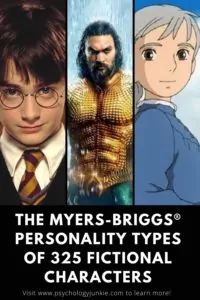





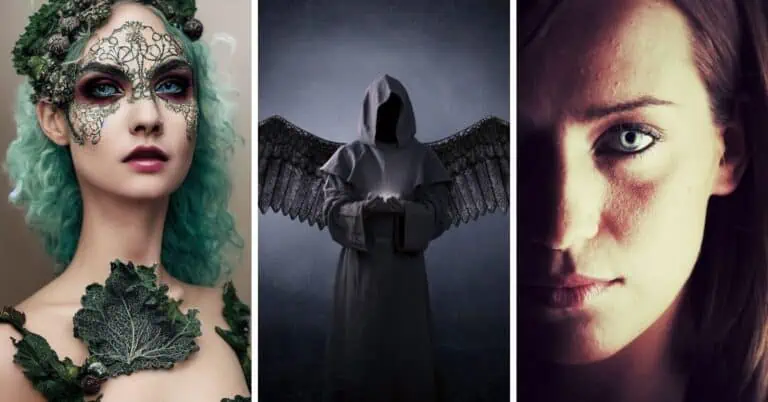
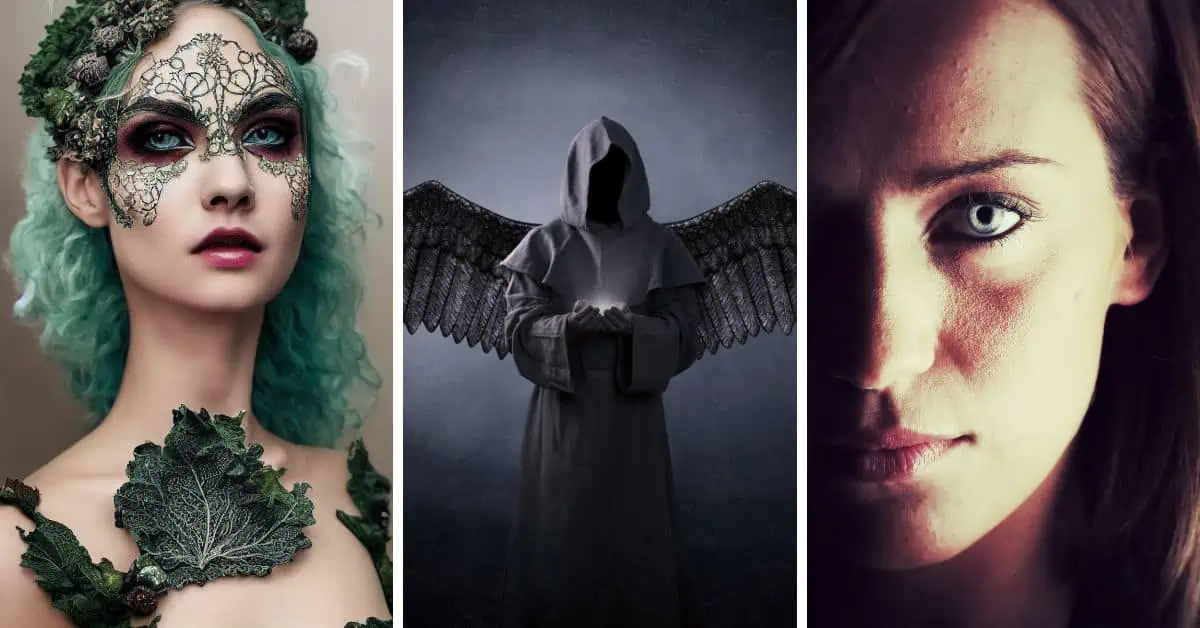
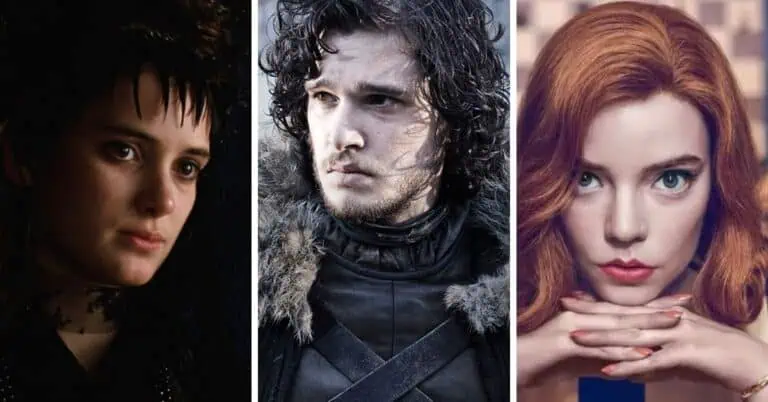
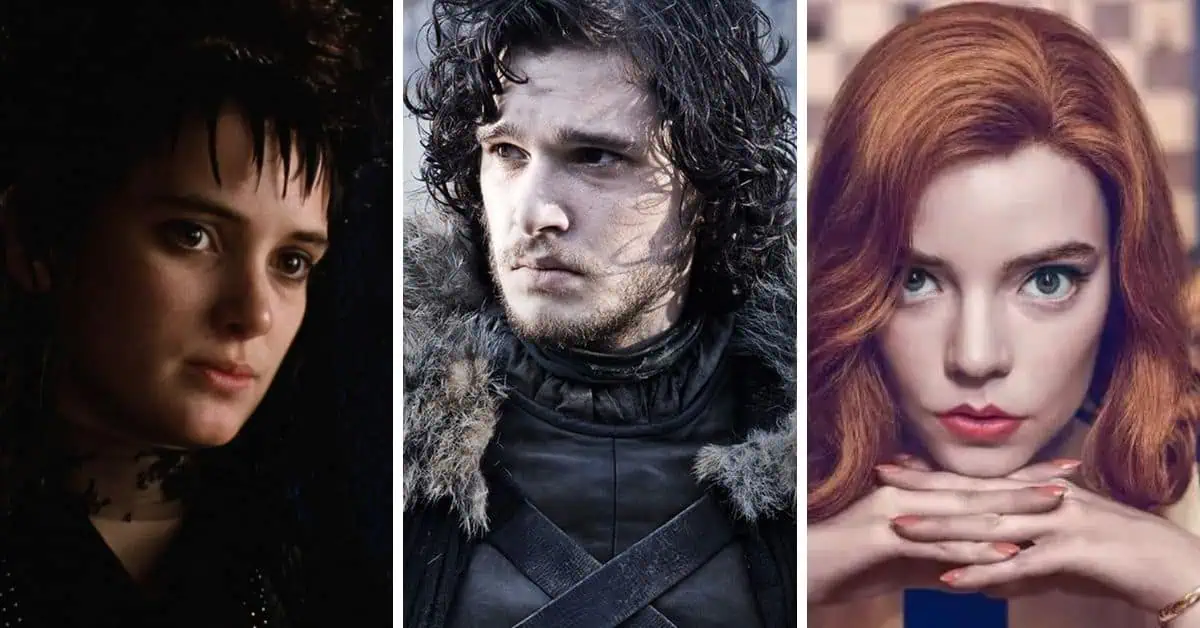

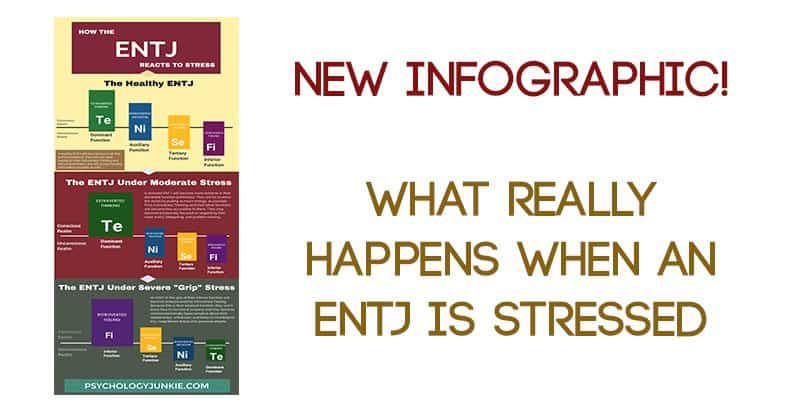
My only disagreement is that I would type Hiccup as an INFP, as the description for the INFP is like a description for Hiccup:
Creative and contemplative, he looks for meaning over material success. He is driven by his imagination and his hope for a better, kinder world. He values peace quite highly and would rather talk than go in guns blazing. More than anything, he is loyal to his personal values. He gains his perspective of right and wrong from an independent standpoint, rather than looking to society’s rules and agendas (for instance, with the obvious dragon issue). Naturally curious, he is adept at thinking outside-the-box and seeing many perspectives. His lifestyle is flexible, adaptable, and tolerant unless a value is threatened.
Eowyn, however, was perfectly typed. All I need to know that is when Aragorn asks her what she fears and her answer is “a cage.”
Great post!
Hello, thanks for the cool article! I’m curious about the MBTi type of Inspector Jules Maigret, from the prolific author Georges Simenon. Ive read almost all of these books in order, and i love this character so much. He is certainly an intuitive type. I realise these books are probably pretty obscure to most people but asking all the same! Thanks in advance, and thanks for your articles in general 🙂
I just love your blog!
Thank you so much!!
Captain Jean Luc Picard of Star Trek is a classic INTJ and one of my favorite characters of all time 😀
. No and no for Bourne … ISTP is really the trap. Bourne chose an ability improvement program to serve his country. He embarked on a training for a complete de-humanization. He was agreed to lose all his autonomy, all his personnal thinking. To become a machine. He was very cold and very obedient until his past resurfaces despite the programming (Strong Si?) All his abilities are absolutely artificial and do not come from any personal training. ISTPs hate not understanding the process of something (Ti). They want to know how they got an result more than any other (S) type. ISTP is literally impossible for Bourne: ISTJ.
. Yes for Tyler. He is rather ESTP, even if ENTPs recognize themselves in him. His philosophy is based on physical combat, essentially.
For Louise Banks. Well observed. INFJ makes sense indeed.
Fun post. I mostly agree with the ENTP choices. The one I disagree with is the 10th Doctor. I would think the 11th Doctor is more fitting. The 10th doctor always seemed ENFP to me. Either way, both are Ne dominants, but I found 10th to have a more Fi manner to his dress and his reserved nature. He had moments of self righteousness that drive him to break rules. Whereas the 11th wore clothes more acceptable and any unpopular additions (bow ties, fez, cowboy hat) he would try to influence popular thought by saying they were cool (Fe). 11 also would go on logic rants as he analyzed situations always excited by the revelations that came from them.
I think that Harry Potter is more of an ISTP i the books. In the movies he is different, okay (and T and F are very close functions)
Hmm… This is very… Hmm… Well, I won’t bother being polite. This is somewhat inaccurate.
First of all, I would like to address the issue that Harry Potter and Susan Pevensie are very different, and have different personality types from each other.
Susan is probably an ESTJ. Harry’s an ISFP, and doesn’t fit the ISTJ type. He is Feeling and Prospecting, not Thinking and Judging.
ISTJs respect the rules, and hate it when people break them. This is entirely different from Harry, who often breaks the rules throughout the series.
Secondly, I wish to address the mistake you made with Mr Darcy’s personality type. He is an ISTJ, not an INTJ. I can’t stand it when people mix the two up.
~Narcissa Snape
I think Lily in Modern Family is an INTP.
Severus Snape was missed in the INTJ list.
I absolutely loved this post! It was fascinating to see how various fictional characters align with the different Myers-Briggs personality types. It really added depth to my understanding of both the characters and the personality framework itself. I would love to see more profiles or perhaps even some lesser-known characters analyzed in future posts!